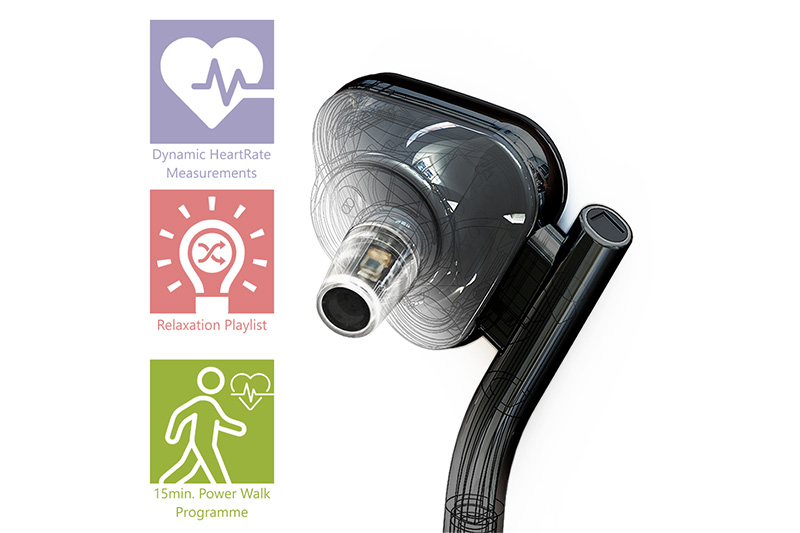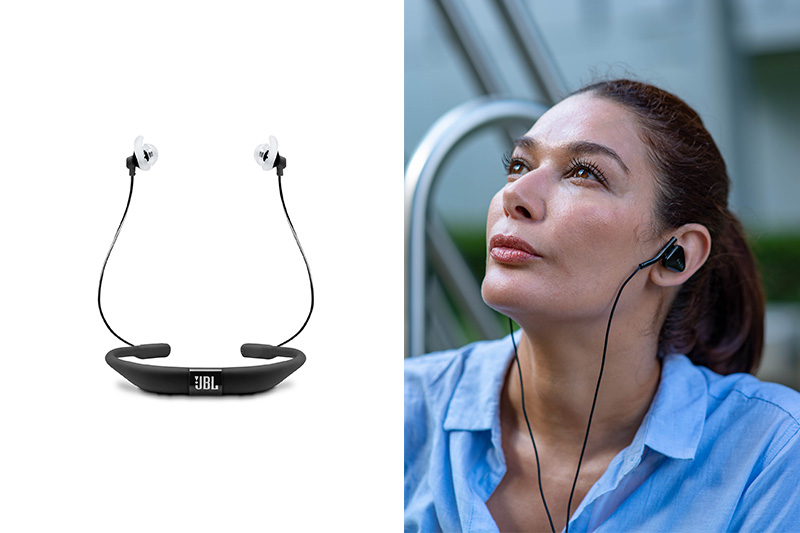With over 50 patents filed worldwide, Hong Kong-based wearables and hearables tech company Well Being Digital is working with Fortune 500 companies to create health-tracking software for IoT devices.
Hong Kong tech company Well Being Digital (WBD101) is pushing the boundaries of mHealth (mobile health) with its advancements in wearables and hearables tech – think Apple Airpods and Fitbit. Working with an optical measurement technique called Photoplethysmography (PPG), WBD101 is developing increasingly accurate ways of measuring biometrics such as your dynamic heart rate, respiratory rate, maximum oxygen uptake (VO2 max), inter-beat interval (RRI) and more. They’ve also designed motion recognition software, MOGOTM, which operates as a pedometer, measures vertical oscillation, analyses your balance and detects injury across 3 or 6 axis sensors and have created one of the world’s smallest heart rate sensors that sits in a pair of earphones. With over a decade of experience in the field and over 50 patents filed in USA, China, Europe, Hong Kong, Taiwan, Japan, WBD101 is now working with Fortune 500 companies to design and streamline health tech products. Our team at Hive Life sat down with WBD101’s founder and director Kow Ping to chat about how his enterprise is opening up a wealth of health-tracking possibilities.

Breaking into IoT markets across Europe, USA and China, WBD101 is streamlining biometric data collection with their next-generation heart rate measurement technology, ActivHeartsTM, and motion-detection technology, MOGOTM. Their focus thus far has been the sports earphone sector that caters to the fitness demographic, although Kow anticipates substantial growth in the medical/hearing aid field. “For people with active lifestyles, it makes a lot of sense to be measuring biosignals such as dynamic heart rate, motion, balance, how much you oscillate during your run,” Kow says. “But, looking ahead, we’re going to be adding things like blood pressure, body temperature and blood oxygen levels that are more useful to an older demographic.” For now, both technologies can be applied to earphones and watches, as well as forehead, chest and arm sensors which relay data via Bluetooth to your phone.

ActivHeartsTM, in particular, is a big step up, integrating Photoplethysmography (PPG) alongside multiple data collection points to extract relevant data more accurately. Unlike clunkier predecessors, ActivHeartsTM, which applies PPG using infrared light, is compact and doesn’t require sensor-to-skin contact, making long time wearing much more comfortable. “The green light you see in Apple Watches uses PPG too, but green light does not work well on people with darker skins. Medical grade pulse oximeters in hospitals use infrared light, but it can only be used on people in hospitals who are basically motionless,” Kow explains. “Because we’re applying this technology to people who are a lot more mobile, we’ve had to invent better ways and more accurate algorithms to filter out the subsequent motion noise.” To do that, their algorithms have undergone over 1000 accumulated miles of testing across people of different skin colours, genders, ear shapes and sizes to accommodate physiological variations and make more accurate measurements.

With hearables such as the Apple Airpods becoming increasingly fashionable, Kow sees massive potential for medical applications that merge style and functionality. Hearing aids, in particular, could be massively improved and the stigma eliminated, he predicts. Instead of a bulky, flesh-coloured piece of plastic, future hearing aids could be sleek and modern, indicative of an active lifestyle and increased interconnectivity rather than a disability. Adding biometric tracking into the mix, he believes medical hearables could be invaluable for looking after elderly populations. “With motion-tracking hearables, you could know if Grandma’s fallen down, or if Grandpa’s taking shuffling steps because he hasn’t walked for a long time and is prone to fall. You could know if their gait is imbalanced, or what their heart rate is,” he explains. “Next year, we’ll be applying blood pressure detection as well.”
Although barriers such as a lack of software engineers still exist, Hong Kong is a burgeoning player in the global IoT scene with its proximity to IoT manufacturing hub Shenzhen, its sophisticated technology patent system and support from the Hong Kong Science and Technology Parks (HKSTP). “Hong Kong has the strength, the credibility and the credentials to become the healthcare IoT capital of the world,” says Kow. For now, WBD101 is working hard to carry that torch, expanding its connections across Europe and the US to bring the world the tools to maintain healthier lifestyles.
Have a knack for tech or hardware?
Our prototyping workshop at the MakerHive Hong Kong might be right for you! Just email [email protected] for more details.
Related Articles





